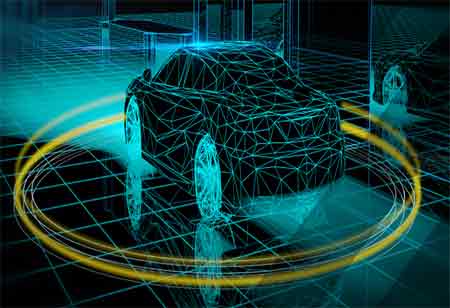Autonomous vehicle technology is going through significant developments that can massively change people's travel.
FREMONT, CA: Autonomous driving has the potential to revolutionize the way people travel and is now undergoing significant development. The complicated implementation challenges are currently essential in discussion as autonomous vehicle technology enters a phase of technological maturity. The possibilities of autonomous vehicle technology appear more robust than ever. Reduced CO2 emissions, traffic congestion, decreased travel expenses, and eliminating the need to look for a parking spot can make the journeys much more comfortable.
What is an autonomous vehicle?
A self-driving car, commonly known as an autonomous vehicle (AV), a connected and autonomous vehicle (CAV), a driverless car, a robo-car, or a robotic car, is a vehicle that can detect its surroundings and move safely with little or no human intervention. Even though fully autonomous vehicles are not currently the norm, they are close to achieving that goal. There are five stages of autonomous driving, each indicating the vehicle's ability to drive itself without human involvement.
Advanced vehicle safety technologies are among the most efficient automobile safety devices to integrate safety performance technology. Even though autonomous vehicles are supposed to be far safer than human-driven automobiles, governments are naturally concerned about AV safety.
New vehicle technology
Vehicle sensor technology
Laser radar or LiDAR technologies are meant to be the new core component of self-driving automobiles. To assist future automobiles and trucks navigate, laser radar works in conjunction with other sensors such as cameras, ultrasonic, and long-range radar.
Vehicle-to-Infrastructure Communication (V2I)
Smart roads need smart vehicles. The wireless transmission of data between automobiles and road infrastructure is known as vehicle-to-infrastructure (V2I) communication. Sensors embedded in road markings, intelligent traffic light systems, intelligent speed bumps, and traffic signal communication are all part of the process of optimizing the path to autonomous driving.
Advanced drive Assistance systems (ADAS)
The safety of automobiles is essential. Advanced driver assistance systems, or ADAS, can help drivers automate specific tasks. Adaptive cruise control (ADC) or park assist function is a popular system. Fatigue detection, which notifies drivers when their concentration is no longer focused on the road, is another technology that can enhance driver safety.
See Also: TOP 10 FINANCIAL SECURITY CONSULTING/SERVICES COMPANIES

 Copyright © 2025 AutoTech Outlook. All Rights Reserved | Privacy Policy | Subscribe | Sitemap | About us | Feedback Policy | Editorial Policy
Copyright © 2025 AutoTech Outlook. All Rights Reserved | Privacy Policy | Subscribe | Sitemap | About us | Feedback Policy | Editorial Policy